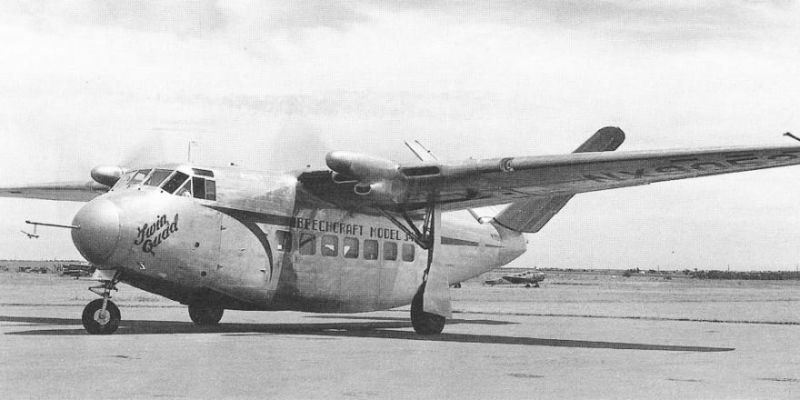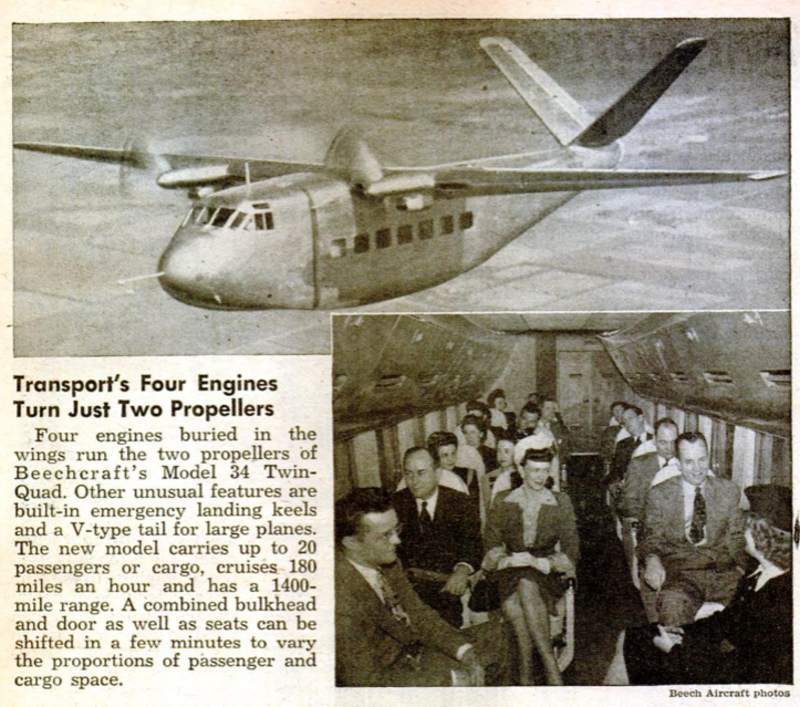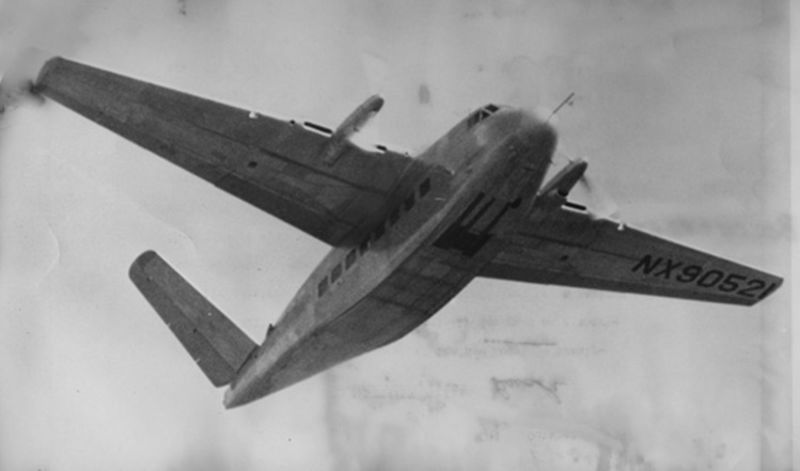From the Planes You’ve (Probably) Never Heard Of Department of Wingspan, we bring you the Beechcraft Model 34 “Twin Quad.”

With the end of the Second World War, the commercial airline industry in the United States and abroad began to grow and passenger numbers began to increase steadily. Advances in large aircraft design during the war allowed for higher capacity and longer flights between far-flung major cities, but shorter feeder routes were still needed to get smaller numbers of passengers to the big city. In an attempt to capitalize on this trend, Beechcraft developed a radical new medium-sized airliner that they hoped would be able to challenge the dominance of other companies and find a niche in this burgeoning market.

One look at the Model 34 and it was clear that this offering from Beechcraft was quite different from many of the other small- to medium-sized airliners of the time. It had a high wing and, from outward appearances, seemed to have no engines. That’s because the four horizontally-opposed Lycoming GSO-580 (Geared, Supercharged, Opposed) eight-cylinder engines were housed inside the wings, an arrangement which resulted in a relatively clean wing not cluttered with massive radial engines. The engines were paired on either side of a common gearbox that turned a large propeller, and gave the Model 34 it’s Twin Quad nickname.

Adding to the novelty of the Model 34 was a large V tail and tricycle landing gear, hallmarks of the smaller Beechcraft Bonanza which was being developed at the same time. The roomy interior accommodated up to 20 passengers with overhead compartments for storing luggage, and the single side row of seats could be quickly removed to make room for more cargo. And, in a nod to its intended use at smaller or unimproved runways, Beechcraft gave the Twin Quad a reinforced belly that protected the passengers in the event of a wheels-up landing.

The Model 34 took its maiden flight on October 1, 1947, and Beechcraft thought they had a winner on their hands. While more than a year of testing proved uneventful, and even included a test of the belly landing system, an electrical fire led to the crash of the only flying prototype on January 1, 1949 which killed the copilot and injured three others. Like many other attempts at creating something new, the Twin Quad ultimately was swamped by a sea of proven surplus military aircraft that flooded the civilian market after the war. Though two other Twin Quads were under construction at the time of the fatal crash, Beechcraft abandoned their quirky airliner and focused their efforts instead on smaller aircraft.
For more on the Twin Quad, see Jayhawk Jake’s excellent piece on Beechcraft’s innovative airliner.
More Planes You’ve (Probably) Never Heard Of
For more stories about aviation, aviation history, and aviators, visit Wingspan. For more aircraft oddities, visit Planes You’ve (Probably) Newver Heard Of.